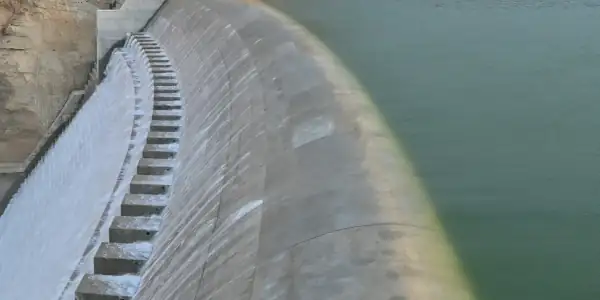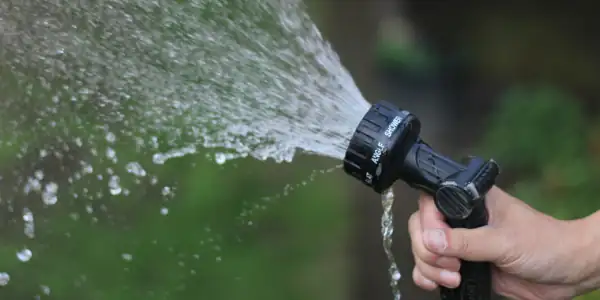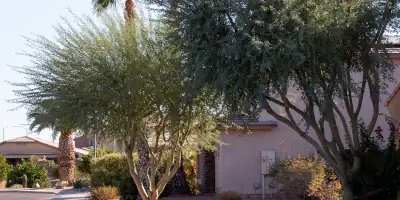In the harsh desert climate of Arizona, proper tree watering is vitally important for keeping trees alive. With temperatures regularly soaring above 100°F and annual rainfall averaging just 7-13 inches, understanding how to water trees effectively becomes crucial for both native and introduced species. The challenges of maintaining healthy trees in this environment require knowledge, dedication, and a thorough understanding of local conditions.
Each tree species has its own unique relationship with water, and what works for one may prove fatal for another. This guide aims to provide Arizona homeowners with the essential knowledge needed to maintain healthy trees for generations. Whether you’re caring for native desert species or introducing non-native varieties, proper watering techniques can mean the difference between a thriving landscape and a costly failure.
Table of Contents
How Should I Water My Trees?
The key to successful tree watering lies in the “low and slow” method, which allows water to penetrate deeply into the soil. Start by creating a water basin around your tree that extends from the trunk to slightly beyond the canopy’s drip line. Apply water slowly to this entire area, allowing it to soak in completely. For most trees, water should penetrate 24-36 inches deep, which you can verify using a soil probe or long screwdriver.
Timing is crucial – water early morning or late evening to minimize evaporation. The frequency depends on your tree’s age: newly planted trees need water 2-3 times per week, while established trees might only need deep watering every 7-14 days. Always check soil moisture before watering by digging 4-6 inches deep – if the soil is still moist, wait another day.
What Kind of Water is Best for Arizona Trees?
Arizona’s water supply varies significantly in quality depending on your location and source. Municipal water often contains high levels of dissolved minerals and salts, which can accumulate in the soil over time. This accumulation affects soil pH, nutrient availability, and overall tree health. Desert-adapted trees generally tolerate higher mineral content, but non-native species may show signs of stress, including leaf burn and stunted growth, when exposed to poor quality water over extended periods.

Filtering options can help mitigate water quality issues and protect your trees’ long-term health. Installing a water filtration system can remove excess minerals and improve water quality for sensitive species. Options range from simple sediment filters to comprehensive reverse osmosis systems. Consider your specific needs and tree species when selecting a filtration method, as over-filtering may remove beneficial minerals that some trees require.
What Kinds of Soil Are There In Arizona?
 Arizona’s diverse soil composition dramatically affects how you should water your trees. Each soil type holds and releases water differently, requiring adjusted watering schedules and techniques. Clay soils hold water longer but need careful management to prevent waterlogging, while sandy soils drain quickly and require more frequent watering. Understanding your soil type is the first step in developing an effective watering strategy.
Arizona’s diverse soil composition dramatically affects how you should water your trees. Each soil type holds and releases water differently, requiring adjusted watering schedules and techniques. Clay soils hold water longer but need careful management to prevent waterlogging, while sandy soils drain quickly and require more frequent watering. Understanding your soil type is the first step in developing an effective watering strategy.
- Clay Soil: Water absorbs slowly, holds moisture longest, prone to compaction
- Sandy Soil: Drains quickly, requires frequent watering, excellent aeration
- Caliche: Dense layer impedes drainage, requires careful water management
- Loam: Ideal balance of drainage and retention, best for most trees
- Desert Soil: Often alkaline, may need amendments for non-native species
- Rocky Soil: Fast draining, may need more frequent watering cycles
What About Soil Drainage?
Proper drainage is crucial for tree health in Arizona’s varied landscapes. Poor drainage can lead to root rot and salt accumulation, particularly in areas with heavy clay. Test drainage by digging a hole 12 inches deep, filling it with water, and monitoring how long it takes to drain completely. Ideally, water should drain at a rate of 1-2 inches per hour. If drainage is poor, consider installing French drains or amending soil with organic matter to improve water movement.
Should Watering Change During Different Seasons?
Arizona’s climate requires significant seasonal adjustments to watering schedules. Summer months demand increased watering frequency to combat heat and evaporation, while winter allows for reduced watering as trees enter dormancy. Spring and fall serve as transition periods, requiring careful monitoring and gradual adjustments to prevent shock to the tree’s system. Monsoon season brings its own considerations, as natural rainfall should be factored into your watering schedule.
Common Watering Issues
Overwatering
Overwatering is one of the most common and deadly mistakes in Arizona tree care. When soil remains consistently saturated, roots can’t access the oxygen they need for healthy growth and function. This creates an ideal environment for fungal growth and root rot, which can kill a tree before symptoms become visible above ground. Desert-adapted trees are particularly susceptible to overwatering, as they’ve evolved to thrive with minimal moisture.
Prevention is far easier than treatment once overwatering damage occurs. Establish a proper watering schedule based on your tree species, soil type, and season. Always check soil moisture before watering by digging 4-6 inches deep – if the soil feels moist, wait another day. Remember that even during summer, most established desert trees need deep but infrequent watering.

Symptoms of Overwatering:
- Yellow leaves throughout the tree (not just on one branch)
- Soft, mushy roots that appear brown or black
- Fungal growth on bark or around the base
- Soil that remains constantly wet
- Leaves that appear swollen or feel mushy
- Branch dieback starting from the bottom
- Fruit splitting before ripening
- Strong, unpleasant soil odor
- Surface mold or algae growth
- Presence of mushrooms around tree base
Underwatering
Chronic underwatering stresses trees and makes them vulnerable to pest infestations and disease. While many Arizona native trees are drought-tolerant, they still need consistent water to maintain health and growth. Water-stressed trees often redirect resources to survival mechanisms, sacrificing leaf production and fruit development. This can lead to stunted growth and, in severe cases, permanent damage to the tree’s vascular system.
Even desert-adapted trees need regular deep watering to establish healthy root systems. Watch for early signs of water stress and adjust your watering schedule accordingly. Remember that newly planted trees need more frequent watering than established ones, and all trees require additional water during extreme heat events.
Signs of Underwatering:
- Crispy, brown leaf edges
- Premature leaf drop
- Wilting or drooping leaves
- Stunted new growth
- Brittle, dying branches
- Yellowing leaves that fall easily
- Soil pulling away from trunk
- Leaf scorch or sunburn
- Reduced fruit production
- Increased susceptibility to pests
Guidelines for Watering Particular Trees
Palo Verde

The Palo Verde thrives with minimal watering once established. Water deeply every 2-3 weeks during summer, extending to 4-6 weeks in winter. Avoid watering near the trunk to prevent collar rot. These trees actually prefer drought stress to overwatering, which can quickly lead to root rot. During establishment, water more frequently but maintain excellent drainage.
Japanese Maple
Japanese Maples require careful water management in Arizona’s climate. Water deeply twice weekly during summer, providing afternoon shade protection. Winter watering can reduce to weekly. These trees need consistent moisture but excellent drainage, and benefit from organic mulch to maintain soil humidity
Desert Willow
Desert Willows require moderate watering during the growing season, with deep soaking every 7-10 days in summer. Reduce watering significantly during winter dormancy to just once monthly. These trees are susceptible to root rot, so ensure excellent drainage and avoid overwatering during monsoon season.
Citrus Trees
Citrus trees need consistent moisture in the top 24 inches of soil. Water every 7-10 days in summer, adjusting to every 14-21 days in winter. Critical watering times are during flowering and fruit set. Maintain even soil moisture but never allow water to pool around the trunk.
Mesquite

Mesquites develop extensive root systems that can extend up to 50 feet deep. Water deeply but infrequently to encourage deep root growth – typically every 3-4 weeks in summer and 6-8 weeks in winter. Be cautious of surface watering, which can lead to shallow, potentially destructive root systems that may damage nearby hardscaping.
Mediterranean Olive
Olive trees are drought-tolerant but need regular water for fruit production. Water deeply every 10-14 days during the growing season, reducing to monthly in winter. These trees prefer dry feet, so ensure good drainage and avoid watering near the trunk. Established trees can survive on minimal water but fruit quality will suffer.
Successfully maintaining trees in Arizona’s challenging climate requires both expertise and dedication. While this guide provides essential knowledge about proper watering techniques, every property presents unique challenges and opportunities. Knowing about the possible challenges and pitfalls will help you better take care of your trees in the harsh desert.
Your trees represent a significant investment in your property’s value and our desert ecosystem. Rather than risk costly mistakes or uncertain outcomes, let our experienced team develop a customized watering plan that accounts for your specific soil conditions, tree species, and seasonal changes. From setting up efficient irrigation systems to providing ongoing maintenance and fertilization, we’re here to help your landscape flourish.
Ready to ensure your trees receive the expert care they deserve? Contact our team today for a comprehensive tree care evaluation and customized watering plan. Call (602) 432-0405 for a free estimate today!
Arizona Tree Care From Alliance Manpower



